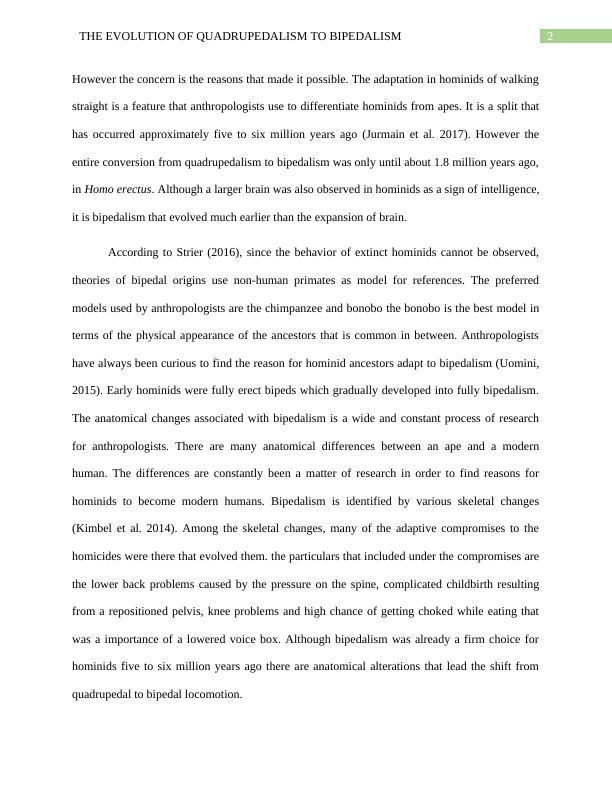The Evolution of Quadrupedalism to Bipedalism
8 Pages2117 Words183 Views
Added on 2023-05-30
About This Document
This essay discusses the anatomical changes required for humans to transform from quadrupedalism to bipedalism, along with the behavioral changes that may accompany the physical changes. It also explores the reasons for hominid ancestors to adapt to bipedalism.
The Evolution of Quadrupedalism to Bipedalism
Added on 2023-05-30
ShareRelated Documents
End of preview
Want to access all the pages? Upload your documents or become a member.
History and Theoretical Framework of Human Bipedalism and Stone Tool Evolution
|8
|2351
|267
Bipedalism and Thermoregulatory Model: Assignment 3
|5
|856
|271
Species Diversity: Humans Vs. Chimpanzees
|6
|1137
|373
Anthropology | Desklib .
|4
|759
|493
Biocultural Evolution Essay
|3
|688
|379



